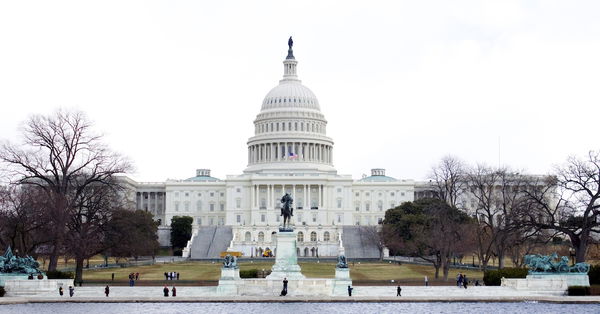Highlights
- While Quebec is held up as a model for Canadians, peer-reviewed research of Quebec’s experiment with a provincial system consistently show negative outcomes for children and parents. Post This
- Free or highly subsidized universal day care schemes have the capacity to do a lot more harm than good for most families on both sides of the border. Post This
Canadian and U.S. families have arrived at a remarkable convergence, grappling with the issue of significant federal involvement in child care at the same time. At about the time that President Biden announced $200 billion for “free” universal preschool for all three and four-year-old children, the Canadian federal budget allocated CAD $30 billion (roughly USD $25 billion) to be spent over five years in the creation of a national, universal day care system for children up to age six. The federal budget promises the annual amount of CAD $9.2 billion by year five of the plan, but also requires the Canadian provinces, who have jurisdiction over child care, to do a 50-50 match for a total child care package of about CAD $18.4 billion annually. For a population about one-tenth of the size of the United States, this may sound like a lot. But is it enough for its stated purpose of a high quality, universal system?
The short answer is a resounding no. The federal government is dramatically underestimating the costs and, more importantly, the complexity of building a system. While proponents of national day care cheered the lowball funding announcement, Cardus developed a detailed costing estimate for national day care, considering training, staffing, salary, maintenance and capital costs, and basing our assumptions on the desires of proponents. A major concern emerged from our analysis: the amount promised is not enough to deliver universal day care; it is, however, enough to destabilize the existing ecosystem of care. The risk is that parents will be left without access to any affordable care and/or poor quality care.
Our costing model involves creating day care spaces for 70% of children between the ages of one and six. We assume space creation for children under 12 months will be less because of Canada’s extensive parental leave. Proponents of national day care want Early Childhood Educators to receive more education and more pay; we worked this into our model. Staffing costs are the largest portion of child care costs and these hinge on how much ECEs are paid, as well as adult-to-child ratios. Based on these and other factors, we created two cost estimates.
Our low quality, lower cost assessment rings in at $17 billion annually. This approximates the Canadian government’s promised amount (if they achieve cost sharing with the provinces). Our more realistic estimate is CAD $36.3 billion annually, ongoing.
The low quality, low cost assessment of CAD $17 billion assumes poor adult-to-child ratios—those that are currently only legally allowable in the province of Quebec, home to North America’s only universal system. In Quebec, it’s legal to have five infants in the care of one adult. If we find a parent of quintuplets who doesn’t get assistance, we can begin to understand why this is poor quality.
In fact, while Quebec is held up as a model for Canadians, peer-reviewed research of Quebec’s experiment with a provincial system consistently show negative outcomes for children and parents. Oft-cited are those by Baker, Gruber, and Milligan showing “cohorts with increased child care access subsequently had worse health, lower life satisfaction, and higher crime rates later in life.” Less cited, but equally important, are the follow-up studies of another Canadian academic who sought to replicate Baker, Gruber, and Milligan. He doubted their claims and wanted to see if he could replicate them. Instead, Dr. Steven Lehrer of Queen’s University found that “Baker, Gruber, and Milligan’s work is 100 per cent correct. It’s robust. If anything, in our own work, including a paper that came out in Canadian Public Policy and won ‘best paper award’ for that year, it actually finds the [negative] effects get larger over time, on average.” Studies such as these are hotly contested, given they are not good news in the struggle to lobby for more state run daycare. The fact remains that so many proponents of national daycare will happily hold up non-peer-reviewed studies, while criticizing those that have been subject to a higher standard via the peer-review process.
The high cost estimate uses better adult-child ratios, and includes sharper growth for early childhood educator salaries, which more accurately reflects the desires of national daycare proponents. Attraction and retention of ECE staff is a large problem in Canada today and a national system would see that struggle grow as ECE salaries compete unfavourably with better paid primary and kindergarten teachers.
Whether done cheaply or for more money, the costs of a system point to a bigger problem. There is endless complexity associated with building a system across a country as geographically and ethnically diverse as Canada, and we have little evidence the federal government has meaningfully grappled with this reality. Consider that many proponents of national day care point to Norway’s child care system as one to emulate. But the entire population of Norway is about the same as the city of Toronto. You could certainly multiply the complications that could arise for a country the size of the United States.
The federal government’s first challenge is to entice the provinces to agree with the government’s terms while accepting the financial and political risks that come with the underfunded scheme. Provinces such as Newfoundland and Labrador that are on the edge of insolvency will have to weigh the five-year commitment against their ability to match the funds. Alberta, where 60% of licensed care is provided by for-profit providers, will have to contend with a federal government that favors non-profit providers.
One of the most difficult questions in all is this: What happens to the existing ecosystem of care in Canada when the federal government subsidizes some spaces and not others? With the advent of national day care, one may assume that the number of private day cares will diminish, given that proponents of national day care generally favor licensed, not-for-profit centres. When Quebec’s system started over 20 years ago, “non-subsidized (but regulated)” daycares crumbled.” These only returned due to a tax break for private day cares, offered in 2009 for parents who couldn’t get the subsidized care from the Quebec government.
If the rollout of the subsidized spaces is done by age, this might mean subsidizing care for pre-schoolers before toddlers, and toddlers before infants. In one Canadian report, this is referred to as “educating down.” With this approach, jurisdictions in the United States have experienced another unintended consequence of the government intervention: greater costs to parents for children in the lower age groups, or loss of care in the younger age ranges altogether.
Long before the Canadian federal budget was delivered in April 2021, proponents of national day care were seeding the ground with the increasing necessity of a national day care system for COVID recovery. What is clear from our assessment is that a national day care system in Canada would be nowhere near completed or available to help with a recovery that needs to start now.
There are better policy levers to help with the costs of child care. The Canada Child Benefit could be increased, for example. If the federal allocation of CAD $9.2 billion were allocated to children under age 6 instead of for spaces, each child could get nearly CAD $4000 annually. If this were means-tested, it could provide substantial benefit to those most in need. Cardus also proposes changes and improvements to child care tax credits, as well as meaningful reform to parental leave. Whatever the route chosen, it would be better than spending billions on a form of child care most Canadians do not prefer. Free or highly subsidized universal day care schemes have the capacity to do a lot more harm than good for most families on both sides of the border.
Andrea Mrozek is Senior Fellow at Cardus Family and the author of Look Before You Leap: The Real Costs and Complexities of National Daycare.












